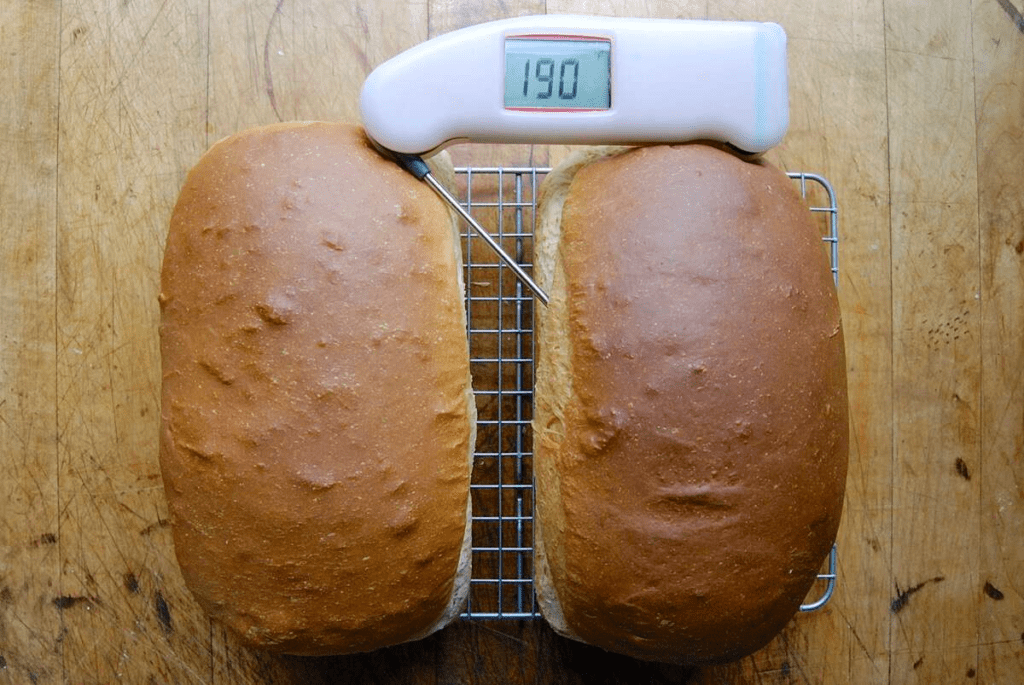
What the best bread baking temperature? If you’re wondering what the ideal bread baking temperature is, then you’ve come to the right place.
Temperature plays a major role in how your bread will turn out, with an even rise and a delicious golden crust emerging from your oven with just the right combination of heat.
So, if you want to know what temperature to set your oven for great results every time, keep reading.
Choose Your Bread Baking Temperature

The best temperature for baking bread depends on what type of loaf you are making. Lean doughs – like French and Italian loaves – benefit most from higher temperatures at around 425°F (218°C).
Whole-grain loaves require lower temperatures (roughly 375°F/190°C) as they need more time in the oven to bake thoroughly.
Pullman loaves call for an intermediate temperature of 400°F/204°C, while focaccia can handle even higher heat at around 450°F (232°C).
Monitor Time and Temperature
For each type of dough, there’s a sweet spot in terms of both time and temperature. Depending on the size and thickness of the loaf being baked, this can vary pretty widely (it could take anywhere from 10-30 minutes).
It’s important to monitor it closely so that you don’t overbake or underbake the bread; burning or an uneven rise could mean wasted ingredients and a whole lot of disappointment!
Test For Doneness Early On
Since most home bakers don’t have access to industrial-grade testing equipment like commercial bakeries do, it’s helpful to use some tried-and-true methods at home to tell when your loaf is perfectly done.
Tap gently on top – it should sound hollow when done – and lift up one corner to check color throughout — light golden brown is ideal! Finally, after 20 minutes of baking time has elapsed insert into the center with a wooden skewer or cake tester; it should come out clean when done.
Understand Temperature Specifications in Bread Recipes
Every recipe is different when it comes to temperatures, so pay close attention when reading your recipe.
Oven temperatures may vary considerably, so if something has worked well for you before it may not necessarily be successful with a new recipe.
Some recipes call for pre-heating your oven to higher temperatures than usual and then turning it down when placing the dough inside; whereas some others work best with moderate temperatures all throughout.
The goal is always the same—to produce an evenly cooked interior that is moist and succulent and a crusty exterior.
Adjust Time Accordingly
When adjusting an oven temperature there should also be an adjustment in terms of cooking/baking time.
When lowering the temperature on original recipes it’s important to increase the baking time so that everything cooks properly without over-browning.
Similarly, when increasing an oven temperature, decrease baking time accordingly so as not to burn any part of the finished product.
Don’t Forget About Steam
Steam helps develop a great (and crunchy) crust during baking since moisture creates a natural steam resulting from liquid such as water or eggs used in recipes coming into contact with hot dry air inside the oven.
Unfortunately, steam can only occur in heated environments of greater than 212˚F (100˚C) degrees which is why steam bakes are usually done right at the beginning before reducing heat afterwards -to help create as much moisture and fluffiness as possible while still getting a nice crispy crust at the end.
Pay Attention To Details
Each type of dough has its own ideal baking conditions that will ensure ideal results —for instance yeast-leavened doughs require high heat during their initial 15 minutes or so of baking and then lower heat near the end.
Whereas sourdough-leavened doughs turn out best with a longer slower bake at about 350˚F (180° C) for around 40 minutes .
So be sure to experiment with different recipes until you get comfortable working with each one and how temperature affects them uniquely each time!
Cool Before Slicing
Finally, make sure not to rush into enjoying your freshly baked masterpiece right away by allowing your new loaf enough time cool off before slicing into it.
This should not be overlooked as cooling allows moisture distribution levels within the inner structure of the bread level off uniformly so as not prevent stale texture down the road.



Leave a Reply